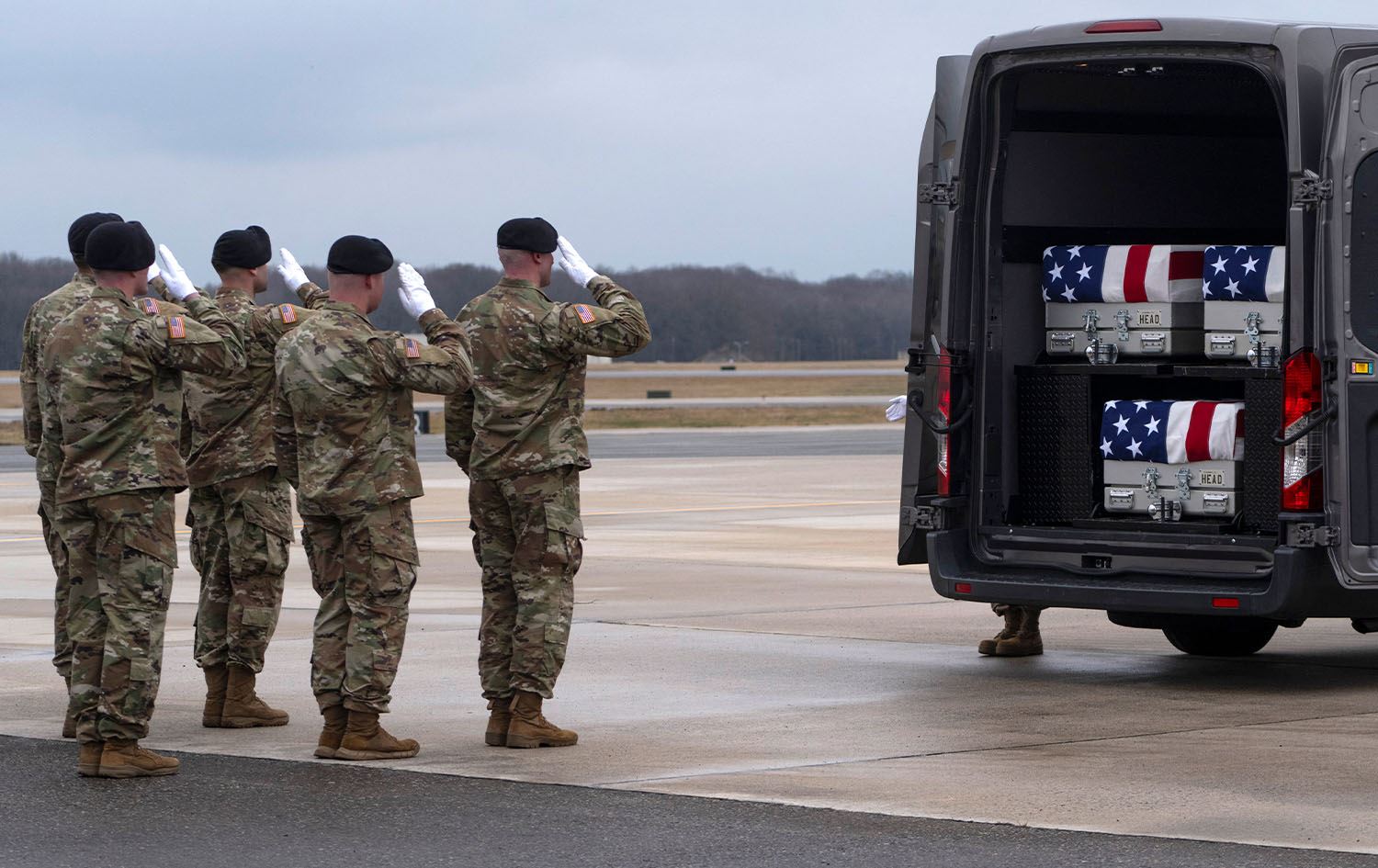
The US military has recently conducted a significant air assault on at least 85 targets in Iraq and Syria used by Iranian-backed militias. This operation, which included the use of numerous aircraft, including long-range B-1 bombers flown from the United States, marks the beginning of a retaliatory response to the drone strike that resulted in the deaths of three US troops in Jordan.
According to a statement from the US Central Command (CENTCOM), the airstrikes targeted Iran’s Islamic Revolutionary Guards Corps (IRGC) Quds Force and affiliated militia groups. The strikes employed more than 125 precision munitions and targeted “command and control operations, intelligence centers, rockets and missiles, unmanned aerial vehicle storage, and logistics and munition supply chain facilities.”
President Joe Biden emphasized that the US response would not be a singular event but rather a “tiered response” over time. He stated, “Our response began today. It will continue at times and places of our choosing.”
In response to recent deadly attacks on a US base in Jordan, the US military has initiated a series of targeted airstrikes against pro-Iran militias in Syria and Iraq. The strikes, which began in Syria, specifically targeted strongholds of pro-Iran fighters in the eastern province of Deir al-Zour on Friday night. At least 13 pro-Iran fighters were reported to have been killed in the airstrikes, with the strikes hitting multiple locations, including the Haidariya region in the desert of al-Mayadeen city, as well as the shrines of Ain Ali and Al-Shibli in the countryside of al-Mayadeen.
The Syrian Observatory for Human Rights (SOHR) reported that the strikes also hit the al-Hizam area and the industrial neighborhood in the city of al-Bukamal, near the Syrian-Iraqi border. In total, 17 sites in Deir al-Zour were destroyed through three rounds of airstrikes on al-Mayadeen and one round on al-Bukamal. The strikes resulted in the death and injury of several individuals at different attacked sites in Syria. It was also reported that an IRGC counselor and an Iraqi individual accompanying them were killed in the strikes.
These airstrikes are seen as the initial stages of a series of targeted attacks on pro-Iran militias in Syria, as tensions continue to rise in the region. The situation remains fluid, and the airstrikes are confirmed to be ongoing, indicating a sustained military response by the US in the region.
As these developments unfold, the impact on the broader geopolitical landscape and the potential repercussions in the region are being closely monitored by the international community. The US airstrikes in Syria and Iraq mark a significant escalation in the ongoing conflict in the Middle East and are likely to have far-reaching implications for security and stability in the region.
The strikes have sparked various reactions from different quarters. Iraqi military spokesman Yahya Rasul Abdullah expressed concern about the violation of Iraqi sovereignty and the potentially destabilizing consequences for the region. Meanwhile, the White House stated that it had informed Iraqi officials ahead of the military strikes.
The retaliatory strikes have drawn mixed reactions from leaders and officials. Democratic Senator Jack Reed, Chairman of the Senate Armed Services Committee, commended the US military’s actions and expressed support for President Biden’s response. On the other hand, Republican Senator Roger Wicker criticized the timing of the strikes, stating that they came “far too late” and that the Biden administration had only done the “bare minimum.”
The situation remains fluid, with the possibility of further military operations in the coming days. The US has made it clear that it will not tolerate attacks on American forces and is prepared to take further action to protect its personnel and interests.








